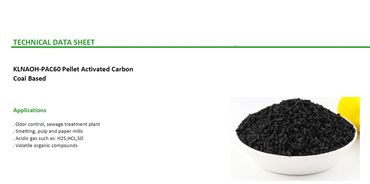歡迎來到 Medicare Plus
Applying Activated Carbon for A Better Environment

Activated Carbon
To remove contaminants or undesirable components from liquids and gases.
It is especially valuable in pollution control and recovery efforts,
ACTIVATED CARBON IN AIR PURIFICATION
Activated carbon is capable of adsorbing undesirable components from gases, which makes it incredibly valuable in air quality control and purification. While it is used in home and office environments to improve air quality, its most notable air purification role is in the treatment of flue gas.
Flue gas, or the exhaust gases exiting industrial process settings that utilize incinerators, smelters, and the like, contains harmful pollutants in the form of heavy metals, furans, and dioxins, which are not always removed through standard exhaust gas treatment methods. In order to effectively remove these harmful materials, additional methods are employed.
Mercury Removal by Activated Carbon Injection
Activated Carbon Injection, or ACI has been found to be an effective technology for removing these harmful components from exhaust gases. This is particularly evident in fossil-fueled power plants where activated carbon injection is used to remove mercury from exhaust gas. Powdered activated carbon (PAC) is injected into the flue gas duct, where it goes on to adsorb the mercury from the gas and is then collected as particulate matter.
Through activated carbon injection, companies are able to comply with the Mercury and Air Toxics Standards (MATS) put in place by the EPA, which regulate the amount of mercury and other pollutants that can be released into the atmosphere by oil- and coal-fueled power plants.
In addition to flue gas treatment, activated carbon can also be used in large-scale odor neutralizing applications.
ACTIVATED CARBON IN WATER PURIFICATION
Municipal and Industrial Wastewater Treatment
Activated carbon is a critical tool in upholding water quality in both municipal and industrial settings.
In municipal settings, it is utilized in wastewater treatment facilities to remove a number of soluble organics as well as some inorganic compounds and heavy metals after initial treatment.
In industrial settings, activated carbon is employed to remove a host of undesirable materials from a variety of wastewater streams.
In both settings, activated carbon is the catalyst for preventing harmful organic or inorganic components from ending up in surface or drinking water.
Groundwater Remediation
In addition to municipal and industrial wastewater treatment, activated carbon is also widely used in groundwater remediation projects to remove volatile organic compounds (VOC’s) from contaminated groundwater, as well as in the treatment of leachate from landfills.
ACTIVATED CARBON REGENERATION (REACTIVATION)
One of the major advantages to using activated carbon is that it can be regenerated/reactivated, meaning the adsorbed components can be desorbed from the activated carbon, yielding fresh activated carbon that can be reused again.
Product


